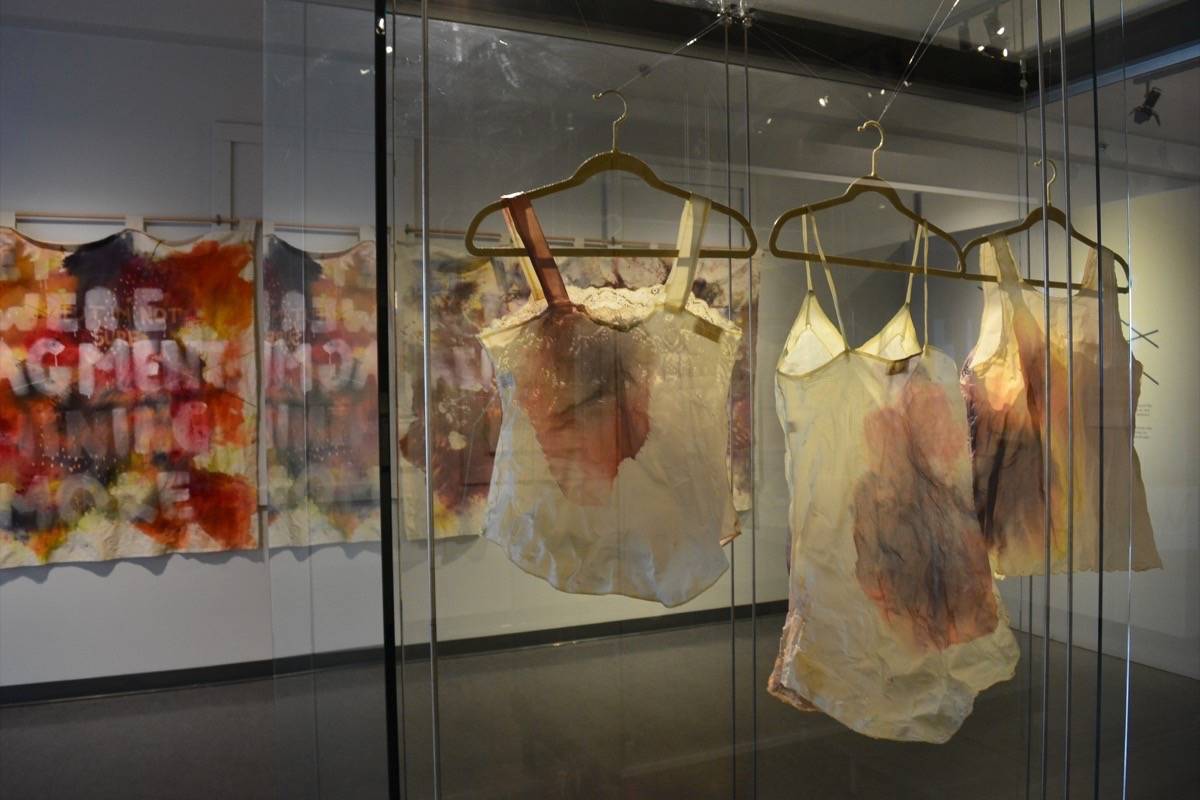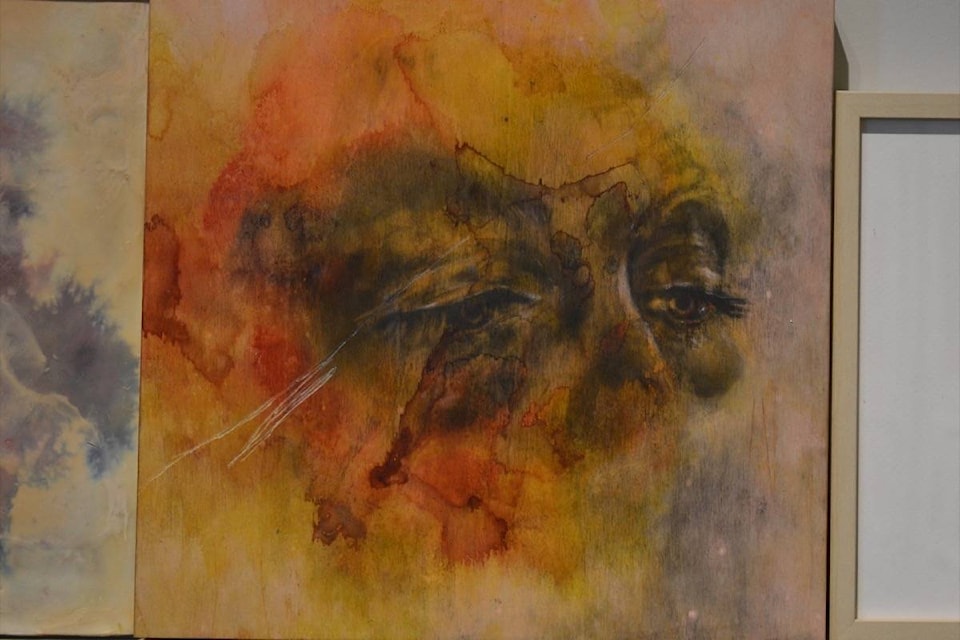Vintage underslips suspended in a plexiglass case evoke ghostly forms; partial texts amid canvas and mixed-media abstractions seem to offer tantalizing, suggestive slivers of narrative, well-rendered human faces emerge from nebulous colour fields.
And the works – in the current exhibit at White Rock Museum and Archives, Fathom, by Trinity Western University arts and design honours degree students Emily Arnett and Bailey Snider (opening Thursday, March 29 at 7 p.m.)– share a similar palette; predominantly red and brown tones, which might, to some, suggest fresh, or dried, blood.
“We are fragments, nothing more,” proclaim partly focused capital letters on one of Snider’s canvases, while Arnett’s artist’s statement refers to an exploration of physical bruising patterns and colours – there are clearly intriguingly muffled echoes of emotional trauma lurking just beneath the show’s provocative surface.
Yet, as a conversation with the artists reveals, there are no right or wrong interpretations in works that have moved intuitively and experimentally toward expression.
And the viewer’s own individual experiences and emotions are invited and welcomed as part of the continuing evolution of the pieces themselves – a way of fathoming human experience using art as a medium of catharsis.
“The process of creating is something we both draw a lot of inspiration from,” Arnett explained.
“We named the show Fathom because we are both visual people focused on the act of creating, and because a fathom is also a measurement of water,” added Snider.
Indeed, water seems to be another vital element in these mixed-media pieces, part of the flow of colour suffusion through Snider’s canvases, and both Arnett’s clothing and her acrylic, ink and graphite two-dimensional pieces.
“And having (the show) right by the water in White Rock – we couldn’t have planned it better,” said Arnett, who noted that staging a show is part of their requirement in the honours program (two colleagues also recently exhibited their works at Langley’s Fort Gallery).
“My work is largely about storytelling,” said Snider, who added that the fragmentary phrases she has included were jotted down, without particular design or narrative in mind, during the act of developing her paintings.
“People see them and interpret their own stories,” she said, noting that the show already evoked an emotional response from one viewer who related it to a friend’s experience.
“That’s the fortunate part about the exhibit – you give someone a story and they give you a story in return,” she said.
Arnett said she can understand if some viewers observing her painted women’s clothing – seemingly stained by some form of trauma – leap to interpret the pieces as social-political commentary.
But that wasn’t her overt intention, she said. She added that her interest in the colours and patterns of physical bruising became part of a broader meditation on the connection between the physical body and emotional body.
Some wounds and scars may not be as easy to detect, even in an era of increased awareness of mental health, she noted.
“What if you could see emotional trauma as clearly as physical trauma?” she said. “People would relate to it more and be more sympathetic and empathetic.”
Arnett, who grew up in Abbotsford, and Snider, who lived near the Semiahmoo Peninsula before her family moved to Walla Walla, Wash., have both been heavily involved in artistic expression since early childhood, they said. And both are determined to continue as artists after graduation.
Arnett, who first started in the arts program at Trinity Western in 2010-11, returned to it last year after some time away to evaluate her priorities.
“I tried to avoid doing art, but I couldn’t,” she said.
“When you’re pursuing art so heavily, it’s because you can’t see yourself doing anything else,” Snider added.
Ultimately, the real meaning of Fathom is what each viewer brings to it, the artists agreed.
“It’s an open invitation to hear their experiences – that ties our work together really well,” Arnett said.
The exhibit continues until April 30. For more information, visit whiterockmuseum.ca

